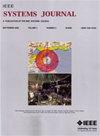Multiagent Sensor Integration and Knowledge Distillation System for Real-Time Autonomous Vehicle Navigation
IF 4.4
3区 计算机科学
Q1 COMPUTER SCIENCE, INFORMATION SYSTEMS
引用次数: 0
Abstract
This article introduces a comprehensive multiagent prototype system designed to enhance the autonomous navigation capabilities of vehicles by incorporating numerous sensors and components. The system includes features such as an ultrasonic sensor for precise distance measurement, a specially crafted “SonarSpinner” with a wide 160° field of view, a vision sensor for road sign detection and steering angle estimation, and an infrared obstacle avoidance sensor, operating with a predefined obstacle-halting threshold of 150 cm. Data collection for model training and evaluation is accomplished using a virtual reality-based self-driving car simulator, resulting in a diverse dataset. The proposed system harnesses knowledge distillation from teacher models, such as the Nvidia model, to create a lightweight student model optimized for real-time inference while retaining competitive accuracy. Additionally, a custom Haar cascade classifier enhances traffic sign detection capabilities. The distilled model is then converted to TensorFlow Lite for efficient deployment on edge devices within autonomous vehicles, ensuring a secure and efficient navigation system. This innovative approach combines optimized distillation methods with specialized classifiers to facilitate the development of robust and real-time self-driving car systems.面向自动驾驶汽车实时导航的多智能体传感器集成与知识蒸馏系统
本文介绍了一种综合的多智能体原型系统,该系统通过集成多个传感器和部件来增强车辆的自主导航能力。该系统包括用于精确距离测量的超声波传感器,具有160°宽视野的特制“SonarSpinner”,用于道路标志检测和转向角度估计的视觉传感器,以及具有150厘米预定义障碍停止阈值的红外避障传感器等功能。模型训练和评估的数据收集使用基于虚拟现实的自动驾驶汽车模拟器完成,从而产生多样化的数据集。提出的系统利用来自教师模型(如Nvidia模型)的知识蒸馏,创建轻量级的学生模型,优化实时推理,同时保持竞争的准确性。此外,自定义Haar级联分类器增强了交通标志检测能力。然后将提取的模型转换为TensorFlow Lite,以便在自动驾驶汽车的边缘设备上有效部署,确保安全高效的导航系统。这种创新的方法结合了优化的蒸馏方法和专门的分类器,以促进鲁棒和实时自动驾驶汽车系统的开发。
本文章由计算机程序翻译,如有差异,请以英文原文为准。
求助全文
约1分钟内获得全文
求助全文
来源期刊

IEEE Systems Journal
工程技术-电信学
CiteScore
9.80
自引率
6.80%
发文量
572
审稿时长
4.9 months
期刊介绍:
This publication provides a systems-level, focused forum for application-oriented manuscripts that address complex systems and system-of-systems of national and global significance. It intends to encourage and facilitate cooperation and interaction among IEEE Societies with systems-level and systems engineering interest, and to attract non-IEEE contributors and readers from around the globe. Our IEEE Systems Council job is to address issues in new ways that are not solvable in the domains of the existing IEEE or other societies or global organizations. These problems do not fit within traditional hierarchical boundaries. For example, disaster response such as that triggered by Hurricane Katrina, tsunamis, or current volcanic eruptions is not solvable by pure engineering solutions. We need to think about changing and enlarging the paradigm to include systems issues.
 求助内容:
求助内容: 应助结果提醒方式:
应助结果提醒方式:


